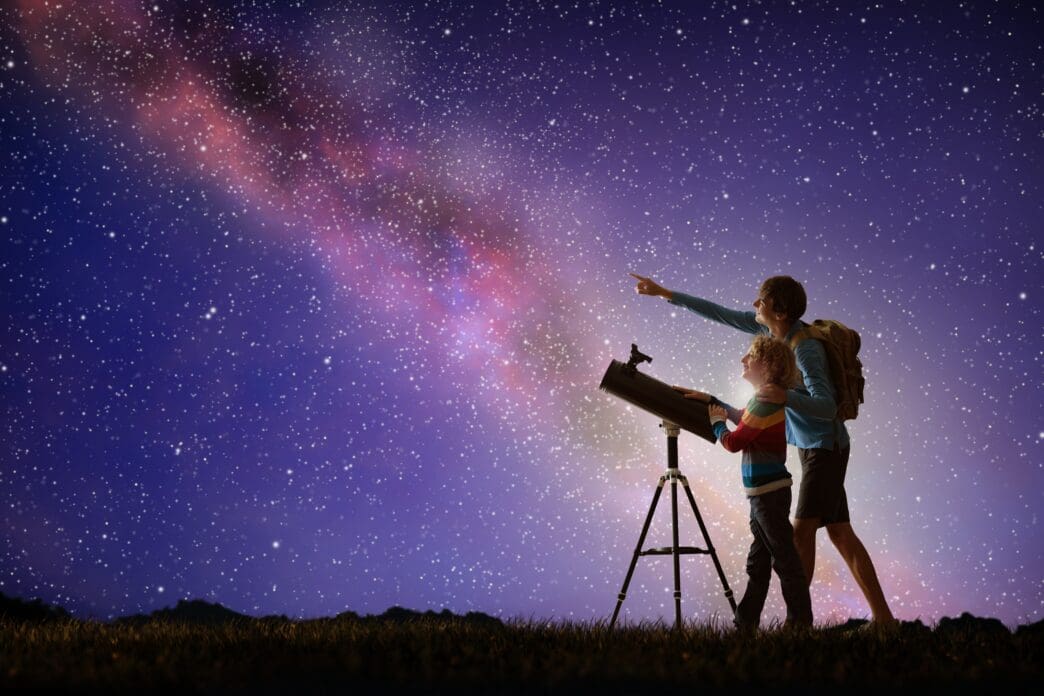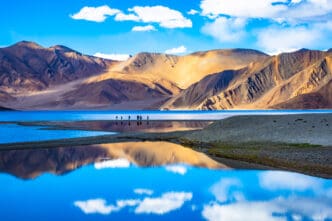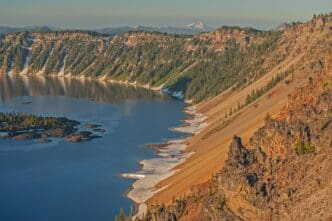Your Essential Overview
- Stargazing destinations, remote locations with minimal light pollution and clear conditions, are increasingly popular for travelers seeking profound cosmic experiences due to growing urban light pollution.
- Ideal stargazing locations are characterized by low light pollution (Bortle Class 1 or 2), clear atmospheric conditions (dry climate, high altitude), and often have infrastructure like observatories or guided tours.
- Globally, premier destinations like International Dark Sky Parks, high-altitude observatories, and specific regions (e.g., Atacama Desert, Canary Islands) are dedicated to preserving dark skies, requiring responsible tourism to protect these environments.
The Destination’s Lore
- The increasing global interest in stargazing destinations and the rise of astrotourism are primarily driven by widespread light pollution from urban expansion, which significantly obscures the night sky, making truly dark locations a precious and sought-after commodity. This trend is further fueled by a societal yearning to disconnect from digital noise and reconnect with the natural world, leading to dedicated conservation efforts by organizations like the International Dark-Sky Association to preserve these pristine nocturnal environments.
Making the Trip Yours
- The increasing popularity of stargazing destinations marks the rise of astrotourism, creating new economic opportunities for remote communities while simultaneously driving crucial efforts in environmental conservation, particularly regarding the reduction of light pollution and the protection of nocturnal habitats. This trend fosters a deeper appreciation for natural wonders, offering travelers profound experiences and emphasizing the importance of preserving these invaluable celestial landscapes for future generations.
Perspectives from the Road
- Travelers and astrotourists are motivated by the desire for profound, unforgettable experiences, a deeper connection to the cosmos, scientific observation, and personal reflection, actively seeking out remote, dark-sky destinations with suitable infrastructure.
- Organizations like the International Dark-Sky Association (IDA) prioritize the preservation and protection of pristine night skies by identifying and certifying locations committed to responsible lighting policies, aiming to reduce light pollution and safeguard nocturnal environments.
- Stargazing destinations and local communities recognize the increasing value of their dark skies, developing astrotourism initiatives and infrastructure to attract visitors, provide economic opportunities, and contribute to environmental conservation efforts.
For travelers seeking truly profound and unforgettable experiences, unlocking the celestial wonders of a pristine night sky offers an unparalleled adventure. Stargazing destinations, typically remote locations with minimal light pollution and clear atmospheric conditions, are becoming increasingly popular for individuals, families, and astrophotographers who wish to reconnect with the cosmos. These global havens, ranging from designated International Dark Sky Parks to high-altitude observatories, provide the perfect backdrop for witnessing meteor showers, distant galaxies, and the ethereal glow of the Milky Way, inviting anyone with a sense of wonder to look up and be inspired.
The Allure of Dark Skies
The magic of stargazing lies in its ability to transport us beyond our daily lives, offering a humbling perspective on our place in the universe. As urban centers expand, light pollution increasingly obscures the night sky, making truly dark locations a precious commodity. Seeking out these untouched celestial canvases provides an opportunity not just for scientific observation, but for deep personal reflection and a profound connection with nature.
This growing appreciation for dark skies has fueled the rise of astrotourism, a niche travel sector dedicated to astronomical activities. Travelers are now actively searching for destinations where the stars are not just visible, but truly spectacular. This pursuit often leads them to remote national parks, high-altitude deserts, and isolated islands, all committed to preserving their nocturnal environments.
What Makes an Ideal Stargazing Destination?
Not all dark places are created equal when it comes to optimal stargazing. Several critical factors converge to create a truly exceptional celestial viewing experience. Understanding these elements is key to planning a successful trip and maximizing your chances of witnessing breathtaking cosmic displays.
The Bortle Scale and Light Pollution
The most crucial factor is the absence of light pollution, which is often quantified using the Bortle Dark-Sky Scale. This nine-level scale measures the night sky’s brightness at a particular location, ranging from Class 1 (an excellent dark-sky site) to Class 9 (an inner-city sky). The best stargazing destinations are typically Bortle Class 1 or 2, where the Milky Way is clearly visible and airglow is prominent.
Light pollution emanates from artificial sources like streetlights, buildings, and vehicles, scattering light into the atmosphere and obscuring fainter celestial objects. Organizations like the International Dark-Sky Association (IDA) work to identify and certify locations that commit to preserving and protecting their night skies through responsible lighting policies.
Weather and Altitude Considerations
Beyond darkness, clear atmospheric conditions are paramount. Destinations known for consistently dry climates and minimal cloud cover, such as deserts, are often prime locations. High altitudes also play a significant role, as thinner air means less atmospheric distortion and fewer aerosols to scatter starlight, offering sharper and clearer views of the cosmos.
However, high altitude also means colder temperatures and increased sun exposure during the day, requiring careful preparation. Stable weather patterns, free from strong winds or humidity, further enhance the viewing experience by preventing turbulence and condensation on optical equipment.
Accessibility and Infrastructure
While remote locations are ideal for darkness, practical considerations like accessibility and available infrastructure are also important for travelers. The best destinations often balance pristine dark skies with reasonable access, accommodation options, and perhaps even dedicated observatories or guided tours. These amenities enhance the overall visitor experience, making stargazing accessible to a wider audience.
Many top-tier stargazing spots have developed specific astrotourism offerings, including telescope rentals, astronomy programs, and knowledgeable local guides. Some even boast specialized “star hotels” or designated viewing platforms, catering specifically to the needs of celestial enthusiasts.
Premier Global Stargazing Destinations
Across the globe, numerous locations stand out as exceptional places to connect with the night sky. These destinations have earned their reputation through a combination of natural conditions and dedicated conservation efforts.
North America’s Celestial Havens
The United States boasts a remarkable collection of International Dark Sky Parks and Sanctuaries, particularly within its vast national park system. Death Valley National Park in California, one of the largest Dark Sky Parks, offers expansive, unobstructed views. Similarly, Big Bend National Park in Texas provides some of the darkest skies in the continental U.S., far from urban centers.
In Canada, Jasper National Park in Alberta holds the title of the world’s second-largest Dark Sky Preserve. Its annual Dark Sky Festival draws thousands, offering educational programs and guided viewing sessions. These parks not only protect the night sky but also provide vital habitats for nocturnal wildlife.
Europe’s Island Sanctuaries
While often perceived as densely populated, Europe offers surprising stargazing gems, particularly on its islands. The Canary Islands, specifically La Palma and Tenerife, are renowned for their exceptional atmospheric stability and high-altitude observatories. La Palma is designated as a Starlight Reserve, with strict light pollution laws protecting its pristine skies.
These islands benefit from the “sea of clouds” phenomenon, where a layer of clouds forms below the observatories, effectively blocking ground-level light and creating incredibly clear conditions above. This unique geography makes them a magnet for professional astronomers and amateur enthusiasts alike.
Southern Hemisphere’s Stellar Spectacles
For those looking to explore constellations unique to the Southern Hemisphere, destinations like Chile’s Atacama Desert are unparalleled. Home to some of the world’s most powerful telescopes, including the ALMA observatory, the Atacama’s high altitude, dry climate, and almost perpetual clear skies make it a premier astronomical hotspot.
New Zealand’s Aoraki Mackenzie International Dark Sky Reserve on the South Island offers breathtaking views of the Magellanic Clouds and the Southern Cross. Similarly, vast stretches of the Australian Outback, far from any significant population centers, provide immense dark sky opportunities, especially in regions like the Warrumbungle National Park, Australia’s first Dark Sky Park.
Chasing the Aurora
While not strictly stargazing in the traditional sense, chasing the Aurora Borealis (Northern Lights) or Aurora Australis (Southern Lights) is a celestial spectacle that draws countless travelers. Destinations within the Arctic Circle, such as Norway, Iceland, Finland, and parts of Canada (Yukon, Northwest Territories), offer prime viewing opportunities during winter months.
These vibrant light shows are caused by solar particles interacting with the Earth’s magnetic field and atmosphere. Planning a trip to these regions requires flexibility and patience, as aurora displays are highly dependent on solar activity and clear skies.
Essential Tips for Aspiring Stargazers
To make the most of your astrotourism adventure, a little preparation goes a long way. Thoughtful planning enhances both your comfort and your chances of a successful viewing experience.
Planning Your Trip
Always check the moon phase before you go; a new moon provides the darkest skies, while a full moon can significantly diminish visibility of fainter objects. Research local weather patterns and cloud cover forecasts for your chosen destination. Consider visiting during meteor showers or other astronomical events for an added spectacle.
Booking accommodation in advance, especially in remote areas, is advisable. Many dark sky parks have designated camping areas, while some observatories offer guided night tours that include access to powerful telescopes and expert commentary.
Gear and Comfort
Even in mild climates, nights in dark sky locations can get surprisingly cold, so dress in layers and bring warm clothing. A red-light flashlight is crucial, as it preserves your night vision without interfering with others’ viewing. Binoculars are an excellent entry-level tool for enhancing views, and a star chart or astronomy app can help you identify constellations and planets.
For serious enthusiasts, a portable telescope might be an option, but often joining a guided tour or visiting an observatory provides access to more powerful equipment without the hassle of transport. Don’t forget a sturdy tripod if you plan on astrophotography.
Respecting the Environment
When visiting dark sky locations, it’s vital to practice responsible tourism. Minimize your own light footprint by using only red-light flashlights and turning off vehicle headlights when parked. Stay on designated paths, pack out all your trash, and be mindful of noise levels to respect both fellow stargazers and nocturnal wildlife.
Adhere to any specific rules or guidelines set by national parks or dark sky reserves, as these are in place to protect these precious environments for future generations. Your responsible actions contribute to the preservation of these incredible natural assets.
The Growing Trend of Astrotourism
The increasing interest in stargazing destinations reflects a broader societal yearning to disconnect from digital noise and reconnect with the natural world. Astrotourism offers a unique blend of education, adventure, and tranquility, providing economic opportunities for remote communities while also fostering a greater appreciation for environmental conservation.
As more destinations recognize the value of their dark skies, we can expect to see further development in sustainable astrotourism initiatives. These efforts not only benefit travelers seeking celestial wonders but also contribute to global movements aimed at reducing light pollution and protecting our shared nocturnal heritage.
Embarking on a journey to a premier stargazing destination promises an experience that transcends typical travel, offering a profound connection to the vastness of the universe. From the arid deserts of Chile to the remote national parks of North America, these celestial havens provide the perfect stage for witnessing the breathtaking beauty of the night sky. By choosing to explore these dark sky sanctuaries, travelers not only fulfill their own sense of wonder but also contribute to the vital effort of preserving our planet’s invaluable nocturnal landscapes for generations to come.








